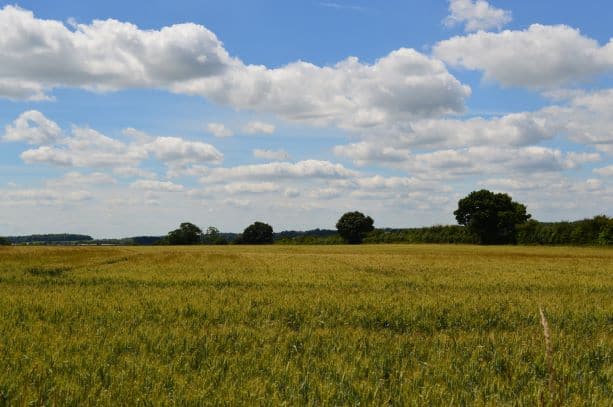Is Biodiversity Net Gain Mandatory?
As it has now become a part of UK legislation, Biodiversity net gain will become a mandatory point for all upcoming development projects in England. Biodiversity net gain (BNG) refers to the process in which a development (or project) considers the environmental impact it will have in terms of biodiversity.
The aim of BNG is to ensure that biodiversity in the area is left in a better state than before the development was completed. This can be done by avoiding biodiversity loss, protecting any assets of strategic significance and retaining various habitat types.
Biodiversity Net Gain (BNG) is being requested more frequently by Local planning authorities to inform planning applications for planning permission. The aim is to demonstrate how the proposed development will be of environmental benefit in a measurable manner within the development plan. BNG also acts as a planning condition as well as a policy requirement for planning consent. It can therefore have a significant impact during the decision making process of planning authorities when debating whether to grant or refuse planning permission.

Why is Biodiversity Net Gain mandatory?
The Environment Bill was passed this year as it received royal assent. Therefore, BNG will soon become mandatory through the forthcoming Environment Act in 2023. There is a two-year transition period before the net gain requirement becomes law (in autumn 2023).
The current national policy in England, The National Planning Policy Framework (NPPF) Paragraph 179 states:
“To protect and enhance biodiversity and geodiversity, plans should:
- b) … identify and pursue opportunities for securing measurable net gains for biodiversity.”
Paragraph 180 states:
“When determining planning applications, local planning authorities should apply the following principles: … opportunities to improve biodiversity in and around developments should be integrated as part of their design, especially where this can secure measurable net gains for biodiversity…”
Various Local Planning Authorities have been requesting the assessment for the past few years now. Many have introduced or are currently beginning to amend local developers plans to ensure they meet the required standard as part of Local Policy.
The Act will require the key points:
- Developers must deliver a minimum of 10% net gain through their schemes; this will be measured through a metric, currently Biodiversity Metric 3.0. This tool can help to identify your biodiversity unit score and translate it into the standards of local planning authorities. This enables comparison between the existing value of a site and what will be delivered pre development and post development.
- A developer will need to demonstrate how biodiversity gain will be delivered on developed land. This will be demonstrated through the production of detailed Landscape Planting Schemes, Landscape Management Plans and Monitoring assessments for on and/or off-site.
- A mitigation hierarchy is to be followed and demonstrated to avoid, minimise or compensate. If it is not possible to compensate on the development site, then offsetting will be required elsewhere. This will be done through discussions of third party land owners, the council, landbanks or wildlife charities.
- Developers will have to guarantee the biodiversity gain is maintained for at least 30 years (as outlined in Landscape Management Plans).
- New “local nature recovery strategies” will be prepared to geographically cover England by “responsible authorities”; this will encourage habitat creation and enhancement in the right places.
- Conservation covenants will be a mechanism used to deliver this (this approach is in preparation by Defra and Natural England).
- A national register of land used for biodiversity gain will be established; this will involve setting up a new biodiversity credits market.
- Metrics are only concerned with habitats and do not take protected species into consideration.
- Other ecological legislation and policies still apply.
The aim is to get clients to think about biodiversity during the initial land acquisition and design stages in order to avoid retro-fitting the calculation once designs have been already been produced. Retrofitting will typically lead to delays, unpredicted financial costs and difficulties with planning application determinations.
How can Collington Winter assist?
Our team of ecologists and landscape architects have helped numerous clients over the years, including with policy guidance for biodiversity gain in England. It is important to note that this varies across each Local Authority in the country. Biodiversity is something that we are qualified and experienced in, and we can offer professional advice on your development project plan. We are determined to offer you the proper support you need in order to reach the mandatory biodiversity net gain required for your planning application.
Please get in touch if you would like further information about Biodiversity Net Gain or Landscape Management Plans. We are happy to offer free CPD sessions on the Biodiversity Net Gain Principles and how we can help your schemes achieve this.
Our Ecology Director, Olivia Collington, holds a Natural England license. If you would like to find out more about the services we provide, feel free to contact us using the details below.
Contact Us
Registered Address
23 Bark Street East, 1st Floor, Bolton, BL1 2BQ
Cambridge Office
Future Business Centre, Cambridge Campus, Kings Hedges Road, Cambridge, CB4 2HY
Leicester Office
Rutland House, 23-25 Friar Lane, Leicester, LE1 5QQ
Bristol Office
Newminster House, 27-29 Baldwin Street, Bristol, BS1 1LT
Telephone
Head Office: 01204 939 608
Dumfries Office: 01387 378208
